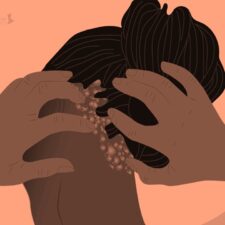
Our hair is a defining feature, always on display, and one of the first things people notice when they meet us. It sparks conversations, creates connections, and serves as a common ground for bonding across age, gender, and cultural lines. Yet, as we age, the changes in our hair—graying and thinning—are inevitable signs of time marching on. For centuries, these changes have been chalked up to the natural aging process, something to be accepted without much explanation. But recent scientific breakthroughs are shedding new light on this age-old mystery.
In a surprising twist of fate, researchers studying a specific type of nerve cell cancer made an accidental yet groundbreaking discovery: the identification of skin cells and proteins closely tied to the processes of graying and hair loss. This finding not only provides insight into why these changes occur but also opens the door to potential treatments that could one day prevent or even reverse graying and balding.
A Chance Discovery with Big Implications
This fascinating breakthrough emerged during research conducted by scientists at UT Southwestern Medical Center in Dallas. The team, led by Dr. Lu Le, was investigating how certain tumors form in nerve cells. Instead, they stumbled upon the mechanisms that control hair pigmentation and growth.
“Although this project was started in an effort to understand how certain kinds of tumors form, we ended up learning why hair turns gray and discovering the identity of the cell that directly gives rise to hair,” said Dr. Le, an associate professor of dermatology.
Their findings, published in a university news release, are paving the way for innovative solutions to what many consider cosmetic challenges but which hold deeper significance. “With this knowledge, we hope in the future to create a topical compound or to safely deliver the necessary gene to hair follicles to correct these cosmetic problems,” Dr. Le explained.
RELATED: Your Gray Hair May Be Linked To What You Eat
How Hair Turns Gray or Falls Out
The research zeroed in on a protein called KROX20, previously known for its role in nerve development. The scientists discovered that this protein also plays a pivotal role in hair formation. When KROX20 is activated in certain skin cells, these cells transform into the hair shaft, the part of the hair that grows out of the scalp.
Additionally, these KROX20-producing cells work hand-in-hand with another protein called stem cell factor (SCF), which is responsible for hair pigmentation. In experiments with mice, the researchers found that deleting the SCF protein resulted in white hair. When KROX20 cells were eliminated, the mice became completely bald.
While these findings are revolutionary, it’s important to note that animal studies don’t always translate directly to humans. However, this discovery sets a strong foundation for further research to determine whether these mechanisms operate the same way in people.
Beyond Vanity: What This Research Means for Aging
The implications of this research extend far beyond aesthetic concerns. Graying hair and balding are often among the earliest visible signs of aging, and understanding their underlying causes could provide broader insights into the aging process itself. If scientists can pinpoint why proteins like SCF and KROX20 stop functioning properly over time, they may unlock clues to the biological mechanisms of aging.
Moreover, these discoveries could lead to treatments that go beyond hair care. Imagine targeted therapies to rejuvenate cells, improve tissue regeneration, or slow down other age-related changes.
What the Future Holds
While treatments to prevent or reverse hair graying and loss are still in development, this research represents a significant step forward. It holds the promise of someday offering a topical solution or gene therapy that could restore hair’s natural color and fullness. Until then, maintaining a healthy hair care routine remains the best way to keep your locks looking vibrant.
If you’re among those who dread spotting gray hair or notice your hairline thinning, take heart: scientific advances are moving us closer to answers—and solutions. While nature will always play its role, we now have the potential to intervene in once unimaginable ways.
RELATED: 6 Gray Hair Truths Revealed
Your Hair Care Journey
In the meantime, staying informed and proactive about hair health is key. From using nourishing shampoos and conditioners to protecting your scalp from environmental damage, small habits can make a big difference.
For more expert hair tips, tricks, and inspiration, visit the Healthy Living tab on BlackDoctor.org. Embrace the journey of aging gracefully, knowing that science is hard at work to keep your locks full of life and color.








